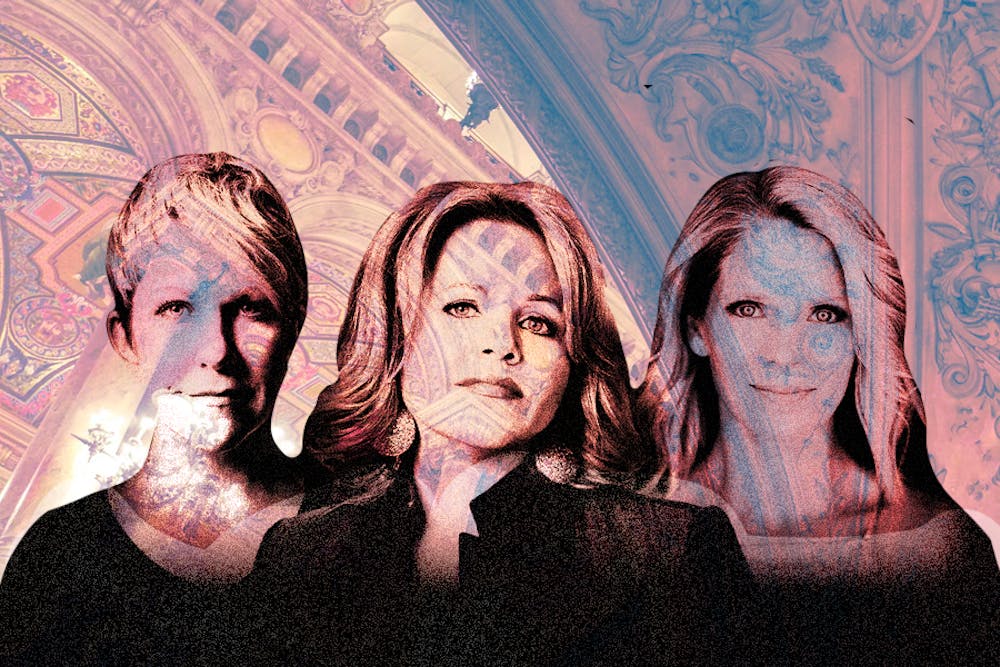Renée Fleming. Joyce DiDonato. Kelli O’Hara.
Recognize these names? Know what they’re all doing together? You may not, unless you’re in tune with the opera scene. But what about Meryl Streep, Nicole Kidman, and Julianne Moore? You might piece together that these are the names of the legendary actresses who starred in the 2002 drama film The Hours, as three women who are separated by time but connected through their shared emotional states. Another common thread running through their narratives is the work of Virginia Woolf; Kidman won the Academy Award for her portrayal of the writer.
Fleming, DiDonato, and O’Hara are similarly iconic, but they exist in the world of opera, rather than film. The catch? These two worlds are growing closer than ever. The Hours has been adapted into an opera, which is being staged next season at the Metropolitan Opera. It’s starring Fleming and DiDonato, respectively the star American soprano and mezzo–soprano of recent decades, and O’Hara, one of Broadway’s greatest who’s been making increasing forays into the world of opera.
The opera by composer Kevin Puts and librettist Greg Pierce premiered in concert with the Philadelphia Orchestra in March, starring Fleming, mezzo–soprano Jennifer Johnson Cano, and O’Hara (DiDonato will join the cast for the New York run). The Sunday matinee was an exciting event—though during the second performance of the premiere, the audience was abuzz with anticipation for the birth of a new musical work on the stage of Verizon Hall.
All three stars offered something special to the performance—Fleming is a uniquely powerful artist on any stage, O’Hara’s Tony–winning acting ability stood out in the concert setting, and Johnson Cano created some of the most powerful vocal moments of the performance. Though the arias themselves are not necessarily memorable, nor the libretto quite consistently in tune with the elevated medium (please never ask an operatic soprano to genuinely sing the word “babe”), both ultimately converge the majority of the time in soaring music of epic proportions.
The root of what makes the opera great is the fabulous story, adapted from Michael Cunningham’s Pulitzer–winning novel, and inspired by the film, which popularized the story to a larger audience. The cinematic magnitude of this narrative, which—somewhat abstractly—portrays an interconnected mass of people and their larger–than–life emotions, translates well to the grandiosity of opera. All three characters are women dealing with overwhelming emotions in the face of complicating factors such as depression, restrictive sexism, and the AIDS epidemic. The fast pace by which life and death are brought into question mirrors the classic drama behind many of the most popular operatic tragedies.
Operatic stories have fluttered between media with vigor over the past few centuries—just recently I was watching 1936’s Camille, with Greta Garbo and Robert Taylor, and reflecting on the versions of the story that have been ubiquitous in art—from La Traviata to Moulin Rouge! Nonetheless, the new attention being given to opera derived from stories that reached their peak on the screen is a relatively modern phenomenon. The Met’s 2017–18 season even featured an adaptation of Luis Buñuel’s 1962 psychological horror film The Exterminating Angel (El Ángel Exterminador), which, though met with mixed reviews, was initially received with great excitement.
There is no telling of the potential for opera if composers and librettists take advantage of the larger–than–life stories that have captivated generations, and transform them from one epic medium to another. An opera called Corleone based on The Godfather? A comic opera rooted in the character comedy and farce of Clue? A romantic duet that erupts out of the passion of Casablanca? Not only are the artistic possibilities limitless, but consider the revival that movie–based operas could be for the medium! Movie fans would flock to the opera houses to engage with these new continuations of their beloved films.
One even could hope that a new generation might return to the opera houses. Some may try to claim that opera's a dying art form, but a new trend is appearing: Younger audiences are gaining interest due to lower–priced ticket options. Appealing to those that will support opera's future is a wise choice for its current investors.
The Hours is proof that opera as a genre has a lot to gain through the potential offered in film stories. The mixing of media has already been a success in concert in Philadelphia, and offers a revitalization when brought to New York's large audience. It won't feel like hours are passing by when the three stars light up the Met's stage under those gleaming chandeliers—the whole evening will seem to pass in minutes.







